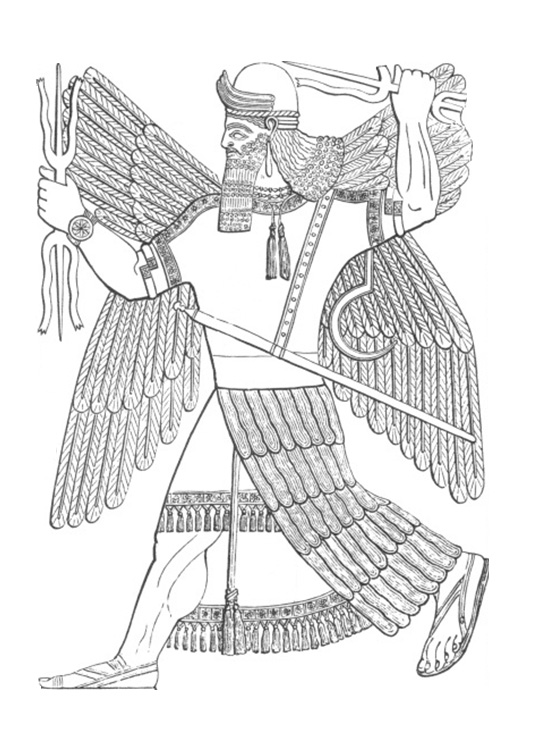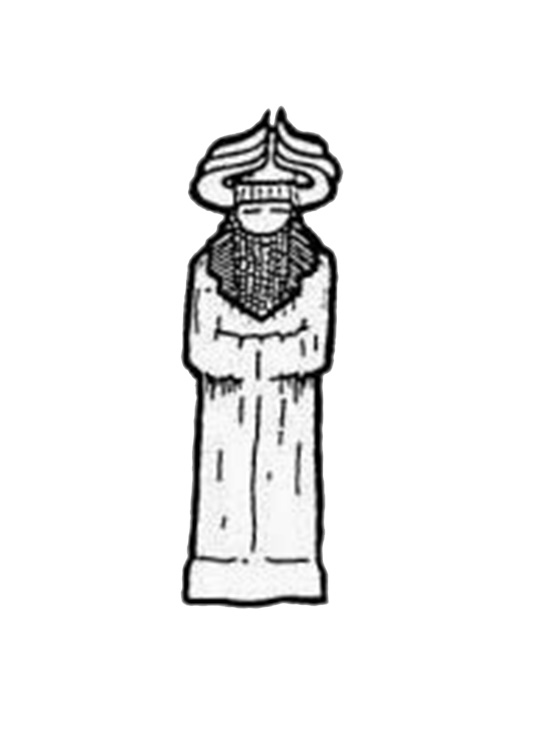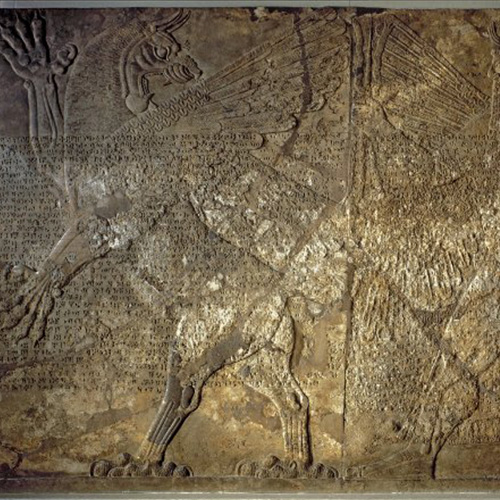About this myth
Epic of Anzu is a Prestige myth originating from the Babylonian belief system. The oldest attested artifact in our index that contains this myth was likely created around 865 BCE. The main deity depicted in this myth is likely Ninurta. Others include An, Anzû, Apsu, Enlil, and Ninḫursaĝ.
Source record No.BM 124571MediumPrint sketchOrientationFrontImage date1851CreatorAusten Henry LayardSource notesLayard, Monuments From Nineveh, 19 [plate no. 5].
In a nutshell
Myth summary
The winged eagle-lion monster named Anzu steals the Tablet of Destinies. No other deity wants to chase him down other than Ninurta, a warrior deity known for hunting. After a failed attempt, Ninurta captures Anzu, ends his life, and recovers the Tablet of Destinies.
Main deity: Ninurta
Belief system: Babylonian
Origin: Asia › Middle East › Iraq
Belief system
Ninurta
Main deity
Ninurta (Sumerian: 𒀭𒊩𒌆𒅁) was a major Sumerian deity associated with agriculture and harvest. In the Assyrian period, he was more closely associated with war and fighting.
arrow_forward More info Artifact
BM 124571
The British Museum
The artifact named BM 124571 has contents related to this mythological story.
Condition: Excellent
Type: Wall Panel
Material: Alabaster stone
Date: c. 865 BCE
More information
Background
The Epic of Anzu is a prestige myth of the Sumerian deity named Ninurta. Anzu is spelled 𒀭𒉎𒈪𒄷 (AN.IM.MIMUŠEN) in Sumerian and represents the ideogram for a bird. It is also seen as AN.IM.DUGUDMUŠEN in Babylonian texts.
Discovery
This myth was discovered through artifacts from the near east. Bendt Alster, an expert in Sumerian translations, noted Anzu as the correct translation of the symbols associated with the winged creature.
Texts related to this myth
See full texts of this myth via related artifacts. Where available, a translation is included.
All texts
| Title | - notes
- translate
- vertical_split
- format_list_numbered
- assignment_turned_in
|



















